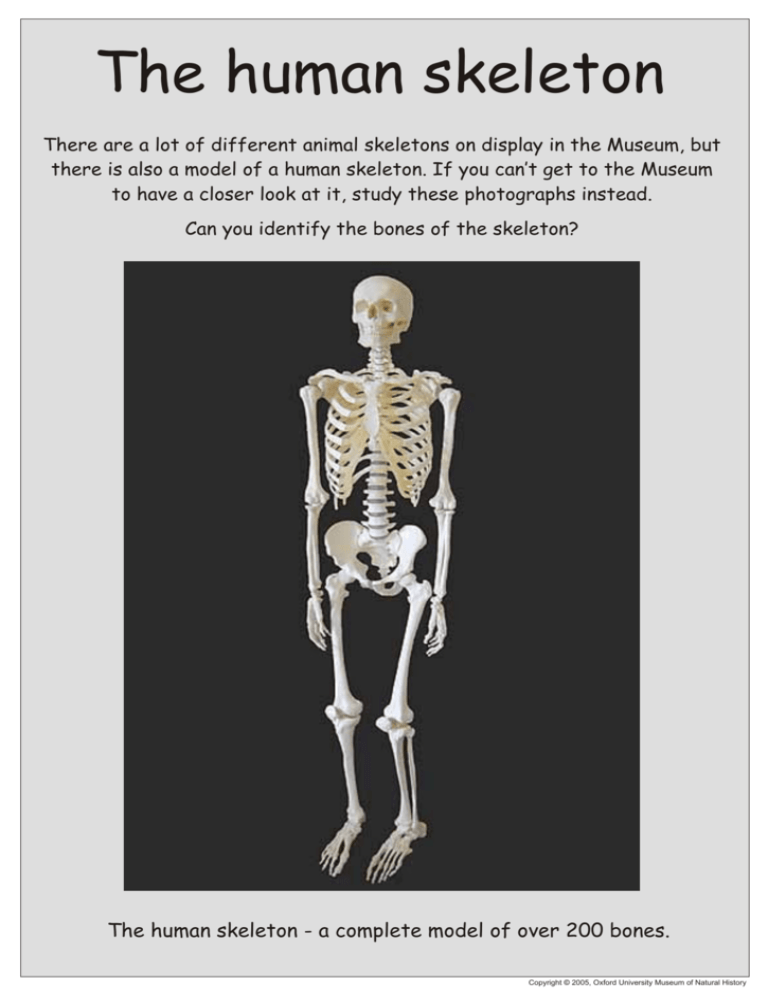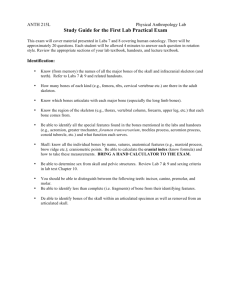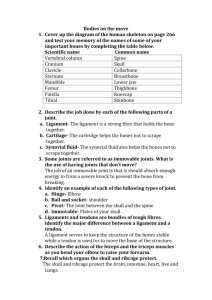The human skeleton - Oxford University Museum of Natural History
advertisement

The human skeleton There are a lot of different animal skeletons on display in the Museum, but there is also a model of a human skeleton. If you can’t get to the Museum to have a closer look at it, study these photographs instead. Can you identify the bones of the skeleton? The human skeleton - a complete model of over 200 bones. Copyright © 2005, Oxford University Museum of Natural History The skull Have a look at different views of the skull. What can you see? Look for: 1. The cranium (braincase) and the mandible (lower jaw) 2. The orbits (eye sockets) 3. The nasal bones (nose bones) 4. The auditory canal (the ear hole in the side view!) 5. The hyoid bone (in front of the throat) 6. The different types of teeth (incisors, canines and molars) Copyright © 2005, Oxford University Museum of Natural History The bones of the upper body Have a look at different views of the skull. What can you see? Look for: 1. The rib-cage and spine 2. The clavicles (collar bones) 3. The scapulas (shoulder blades at the back) 4. The sternum (breast bone) 5. The pelvis made up of the bowl shaped hip bones, the central sacrum, and the coccyx (tail bone) 6. The different types of vertebrae - from left to right from the upper, middle, and lower back Copyright © 2005, Oxford University Museum of Natural History The arm Look for: 1. The humerus (the upper arm bone) 2. The radius and ulna (the outer and inner bones of the lower arm) 3. The carpals (wrist bones), metacarpals (hand bones), and phalanges (fingers) Copyright © 2005, Oxford University Museum of Natural History The leg Look for: 1. The ball and socket joint of the hip 2. The femur (the upper leg bone), 3 The patella (the knee bone) 3. The tibia (shin bone) and fibula (smaller bone of the lower leg) 4. The tarsals (ankle bones), metatarsals (foot bones) and phalanges (toes) Copyright © 2005, Oxford University Museum of Natural History Test yourself! Can you label this skeleton with the names of the different bones? Copyright © 2005, Oxford University Museum of Natural History









